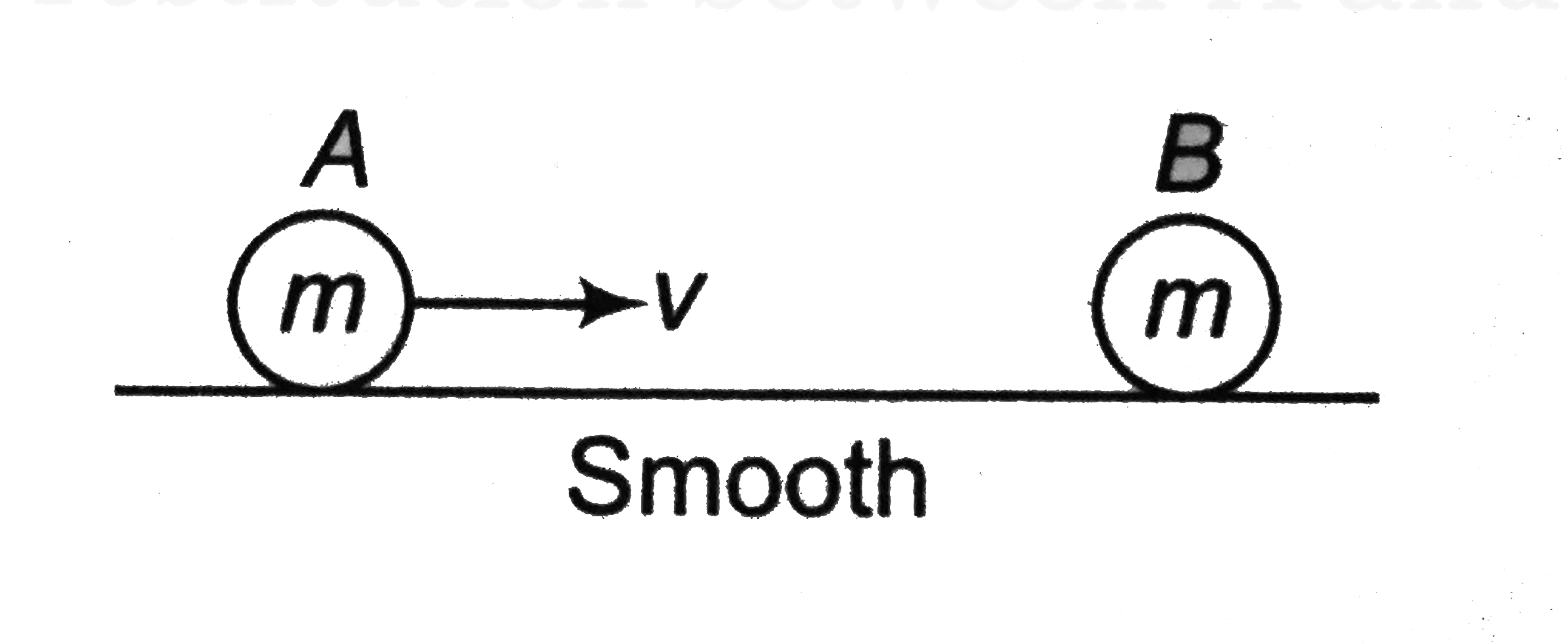Statement-1 : The coefficient of restitution is less than one for all collision studied under Newton's laws of restituation.
and
Statement-2 : For a perfeclty elastic collision, coefficient of restitution is equal to one .
Statement -1 is True, Statement -2 si True , Statement -2 is a correct explanation for Statement -1.
Statement -1 is True, Statement -2 si True , Statement -2 is not correct explanation for Statement -1.
Satement-1 is True, Statement-2 is Satement-1 is True, Statement-2 is False.
Satement-1 is False, Statement-2 is True.
The correct Answer is:B
To solve the given problem, we need to analyze both statements regarding the coefficient of restitution and determine their validity and relationship.
Step 1: Understand the Coefficient of Restitution
The coefficient of restitution (e) is a measure of how elastic a collision is. It is defined as the ratio of the relative velocity of separation to the relative velocity of approach between two colliding bodies.
Step 2: Analyze Statement 1
Statement 1: "The coefficient of restitution is less than one for all collisions studied under Newton's laws of restitution."
- The coefficient of restitution can take values from 0 to 1:
- e = 0 for perfectly inelastic collisions (the bodies stick together).
- 0 < e < 1 for partially elastic collisions.
- e = 1 for perfectly elastic collisions (the bodies bounce off without losing kinetic energy).
Thus, Statement 1 is true because while the coefficient of restitution can be less than one, it can also be equal to one for perfectly elastic collisions.
Step 3: Analyze Statement 2
Statement 2: "For a perfectly elastic collision, the coefficient of restitution is equal to one."
- This statement is also true. In perfectly elastic collisions, kinetic energy is conserved, and the relative velocity of separation is equal to the relative velocity of approach, resulting in e = 1.
Step 4: Determine the Relationship Between the Statements
While both statements are true, Statement 2 does not serve as a correct explanation for Statement 1. Statement 1 refers to all types of collisions, while Statement 2 specifically addresses only perfectly elastic collisions.
Conclusion
- Statement 1 is true.
- Statement 2 is true.
- However, Statement 2 does not correctly explain Statement 1.
Thus, the correct option is B: Both statements are true, but Statement 2 is not the correct explanation for Statement 1.
The coefficient of restitution (e) is a measure of how elastic a collision is. It is defined as the ratio of the relative velocity of separation to the relative velocity of approach between two colliding bodies.
Statement 1: "The coefficient of restitution is less than one for all collisions studied under Newton's laws of restitution."
- e = 0 for perfectly inelastic collisions (the bodies stick together).
- 0 < e < 1 for partially elastic collisions.
- e = 1 for perfectly elastic collisions (the bodies bounce off without losing kinetic energy).
Thus, Statement 1 is true because while the coefficient of restitution can be less than one, it can also be equal to one for perfectly elastic collisions.
Statement 2: "For a perfectly elastic collision, the coefficient of restitution is equal to one."
While both statements are true, Statement 2 does not serve as a correct explanation for Statement 1. Statement 1 refers to all types of collisions, while Statement 2 specifically addresses only perfectly elastic collisions.
- Statement 1 is true.
- Statement 2 is true.
- However, Statement 2 does not correctly explain Statement 1.
Topper's Solved these Questions
- CENTRE OF MASSBOOK - ALLENCHAPTER - CENTRE OF MASSEXERCISE - EXERCISE-IV A
32 Videos
- CENTRE OF MASSBOOK - ALLENCHAPTER - CENTRE OF MASSEXERCISE - EXERCISE-IV B
14 Videos
- CENTRE OF MASSBOOK - ALLENCHAPTER - CENTRE OF MASSEXERCISE - EXERCISE-II
43 Videos
- BASIC MATHEMATICS USED IN PHYSICS &VECTORS BOOK - ALLENCHAPTER - BASIC MATHEMATICS USED IN PHYSICS &VECTORS EXERCISE - EXERCISE-IV ASSERTION & REASON
11 Videos
- ELASTICITY, SURFACE TENSION AND FLUID MECHANICSBOOK - ALLENCHAPTER - ELASTICITY, SURFACE TENSION AND FLUID MECHANICSEXERCISE - Exercise 5 B (Integer Type Questions)
3 Videos
Similar Questions
Knowledge Check
IF e is the coefficient of restitution then which one of the following gives the condition for perfectly elastic bodies ?
Ae = 0Be = 0.5Ce = 0.8De = 1.0
Choose the incorrect statement about the coefficient of restitution
View SolutionThe cofficient of restitution e for a perfectly elastic collision is
(a) 1 (b) zero (c) infinite (d) -1
View SolutionA ball is dropped from a height of 20 m in the floor and rebounds to 1.25 m after second collision, then coefficient of restitution e is
View SolutionIn the figure shown, coefficient of restitution between A and B is e=12, then

View SolutionA particle of mass m collides with another stationary particle of mass M such that the second particle starts moving and the first particle stops just after the collision. Then which of the following conditions must always be valid ?
View SolutionStatement -1 : There is just one quadratic equation with real coefficient one of whose roots is 1√2+1
and
Statement -2 : In a quadratic equation with rational coefficients the irrational roots are in conjugate pairs.
View SolutionSTATEMENT-1 : In an elastic collision between two bodies, the relative velocity of separation equals relative velocity of approach.
and
STATEMENT-2 : In a elastic collision , the coefficient of restitution is 1.
View Solution

